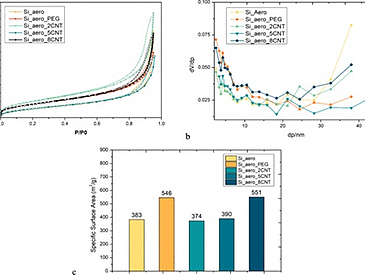Ana Luiza Silveira Fiates, Renato S. M. Almeida, Michaela Wilhelm, Kurosch Rezwan, Michael J. Vellekoop
ACS Omega 9 (2024): 41480-41490
Doi: https://doi.org/10.1021/acsomega.4c05019
Silica aerogels are highly porous materials with unique properties such as high specific surface area, high thermal insulation, and high open porosity. These characteristics make them attractive for several applications in closed microfluidic channels such as BioMEMS, catalysis, and thermal insulation. However, aerogel-filled microchannels have not been reported in the literature yet because of the complexity of creating a process that controls the integration, shrinkage, and mechanical stability of these materials inside a closed channel. In this work, a process is presented to integrate aerogels in microchannels with reproducibility, mechanical stability, and no shrinkage. This protocol is based on the filling of channels during the gelation, which is crucial to avoid shrinkage, CO2 supercritical drying, and mechanical additives (polyethylene glycol and carbon nanotubes). Furthermore, the influence of polyethylene glycol and carbon nanotubes on the compressive strength, porosity, and specific surface area is investigated. Following the suggested process protocol, the integration of different aerogel compositions (with and without reinforcement) is successfully achieved in the microchannels without shrinkage and cracks. This research opens up new possibilities for the use of different aerogels in microfluidics with structural integrity and enhanced functionality.
© 2024 The Authors. Published by American Chemical Society


